Cervélo’s original Áspero and the high-end Áspero 5 were conceived as race bikes for off-road action.
Like those predecessors, the new Áspero is imbued with a fast road-bike ride position and geometry only slightly tweaked from the brand's R-Series road bike.
What Cervélo has changed, however, is the composition of the frame and fork.
It's usual for a brand to update a bike, bringing increased stiffness and lower weight. Cervélo has done the opposite, though, due to feedback from its riders and racers regarding the previous version.
That means the new Cervélo Àspero is not only a little heavier, it's softer too.
In use, the Áspero continues to impress with its road-bike ride position and racy handling. It remains a focused bike, with no concessions made to bikepacking or slower forms of off-road riding.
Cervélo Áspero Rival XPLR AXS frame details
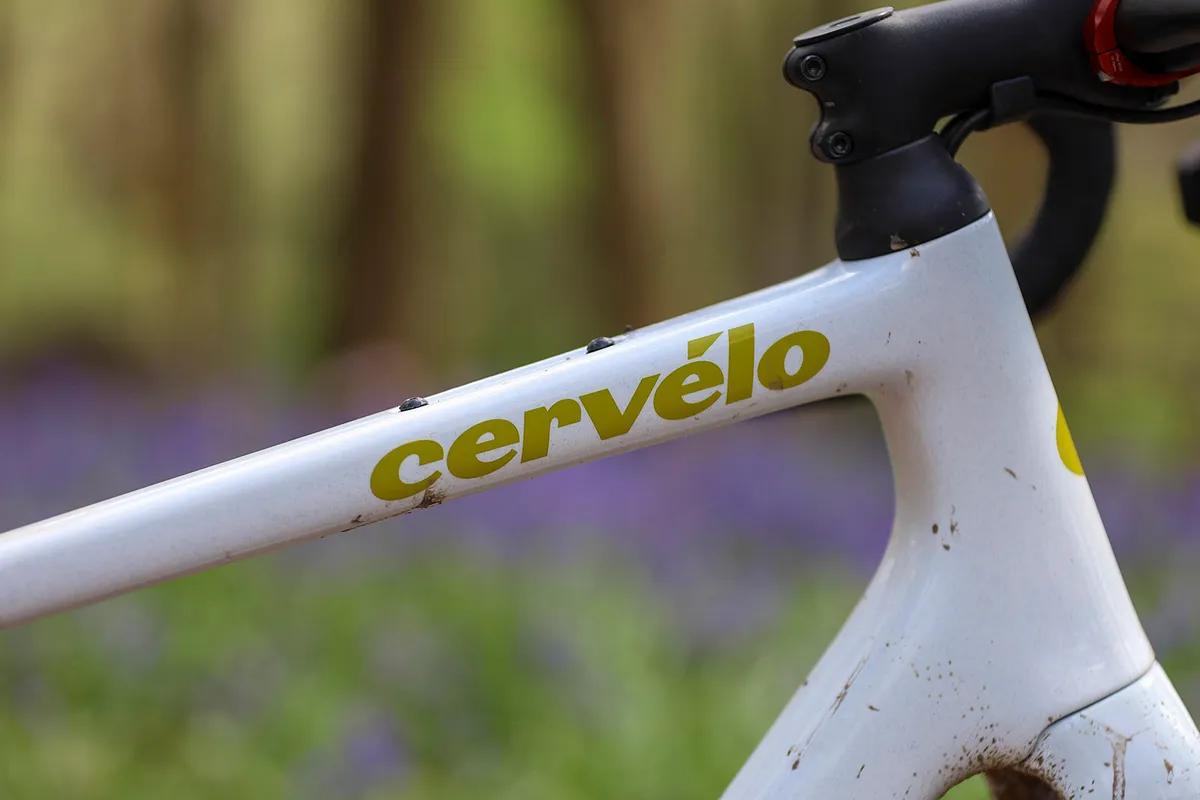
The new Áspero frameset has been tweaked under the skin to reduce the stiffness at the head tube and through the seat tube.
It’s also heavier, at a claimed 1,141g for a size-56cm frame, up from 1,100g, paired with a new 452g fork (6g lighter than the old one).
It's also had tweaks to the shape to reduce the standover height. This ensures the bike is somewhat more agile, thanks to a much more heavily sloping top tube and more compact frame that makes it easier to move around on.
Shifting your weight for balance and navigating more technical terrain is easier, with the seatstays lowered to increase the flexibility in the seat tube. This is now topped with a standard round profile, enabling the use of a gravel dropper post (there’s internal-routing provision for that too).
The frame and fork have gained tyre clearance too, up from 40mm to 45mm.
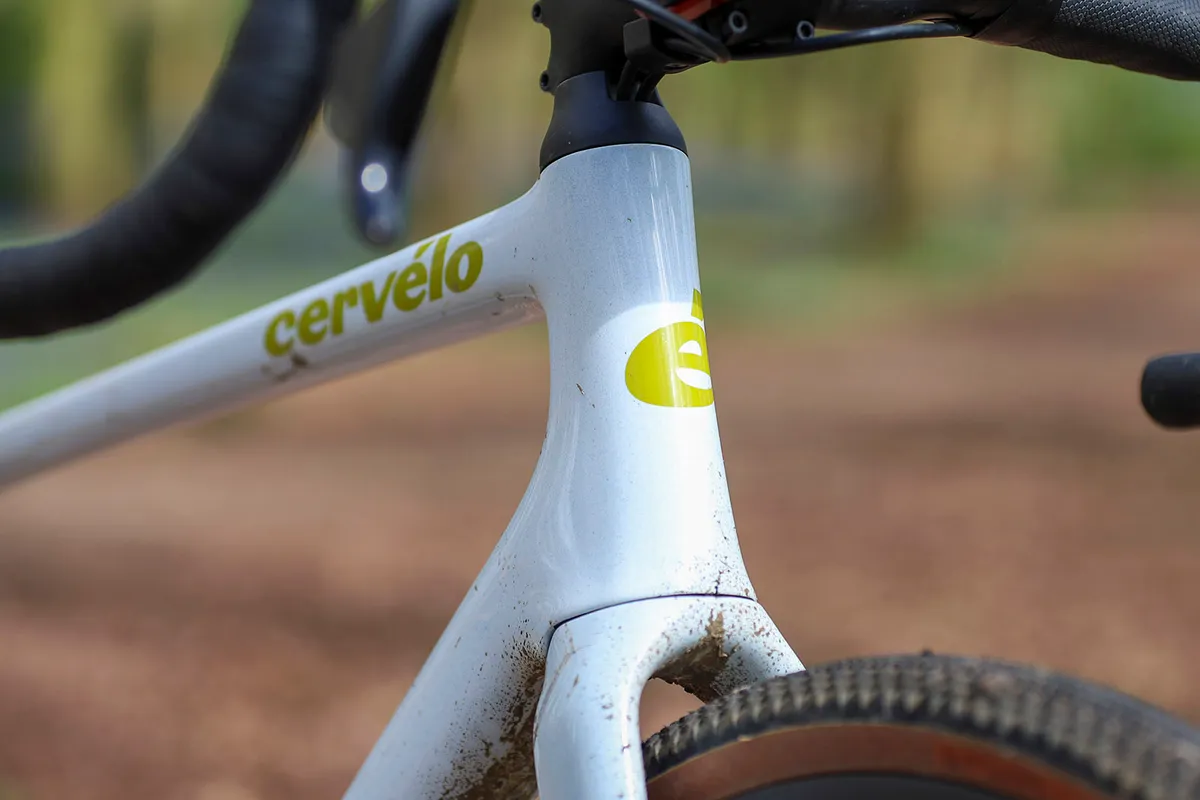
That’s comparable to gravel race bikes such as the Specialized Crux (47mm) or Trek Checkpoint SLR (45mm).
Cervélo has retained the Trail Mixer dropouts from the previous fork, but it no longer talks about 650b wheel sizing as it did with the original Áspero.
These adjustable dropouts are instead intended to keep the handling uniform, no matter what tyre size you choose.
To be specific, the insert alters the position of the fork offset fore and aft by 5mm horizontally. Cervélo claims this means running a relatively slender road bike tyre on a 700c wheel will feel the same when running a maxed-out 42mm gravel tyre.
The seat tube has also been re-profiled, with a more prominent wheel cut-out, and the chainstays are 5mm longer at 425mm (although that's still very short for a gravel bike).
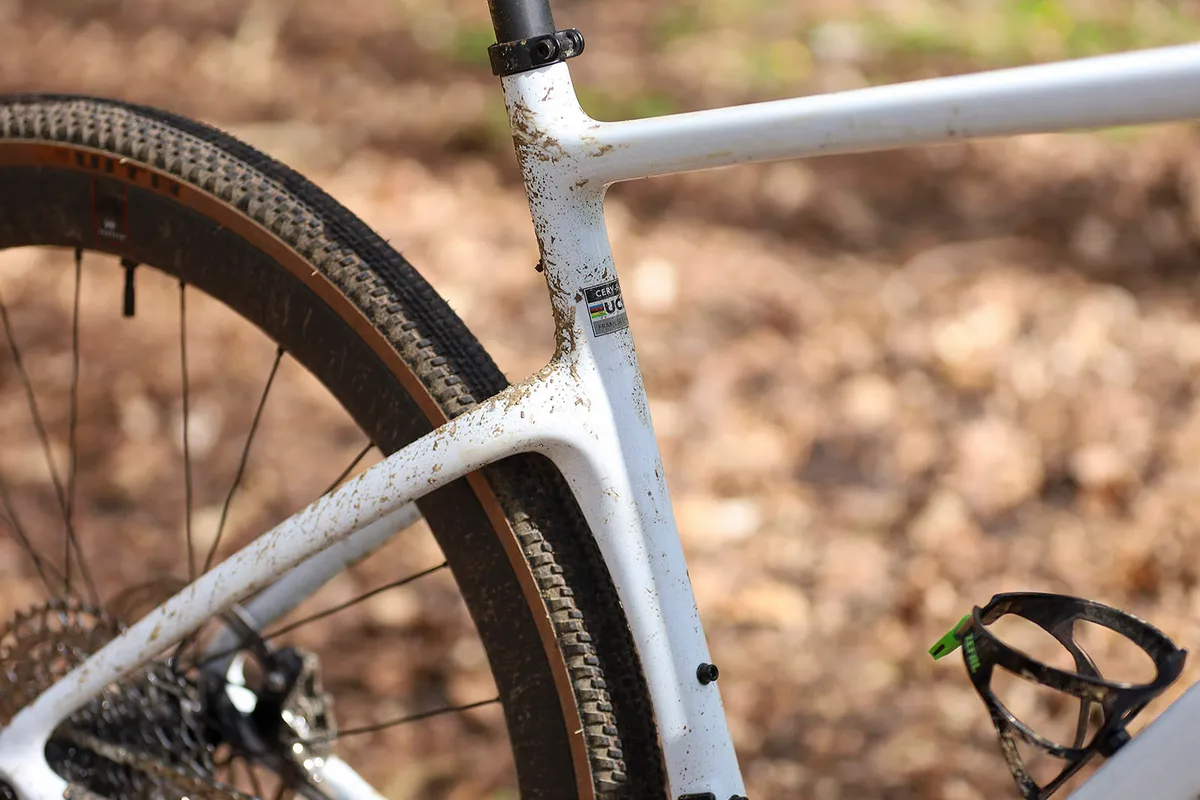
The driveside dropout now sports a SRAM Universal Derailleur Hanger, opening up custom builds to SRAM’s T-Type mountain bike rear derailleurs.
The top tube is much more sloped than previously too, while up front, the fork chin cuts into the head tube for better aerodynamics.
Aero also plays its part, with the Áspero switching to the ST36 internal cable-routing system from the Soloist.
This combines a standard round head tube and headset, with a custom split ring on top and a D-shaped carbon steerer tube. Brake hoses and gear cables (where present) are then routed under the stem and into the head tube through to the fork and rear chainstay.
This cleans up the front end, providing better clearance for bar bags, and reduces aerodynamic drag too.
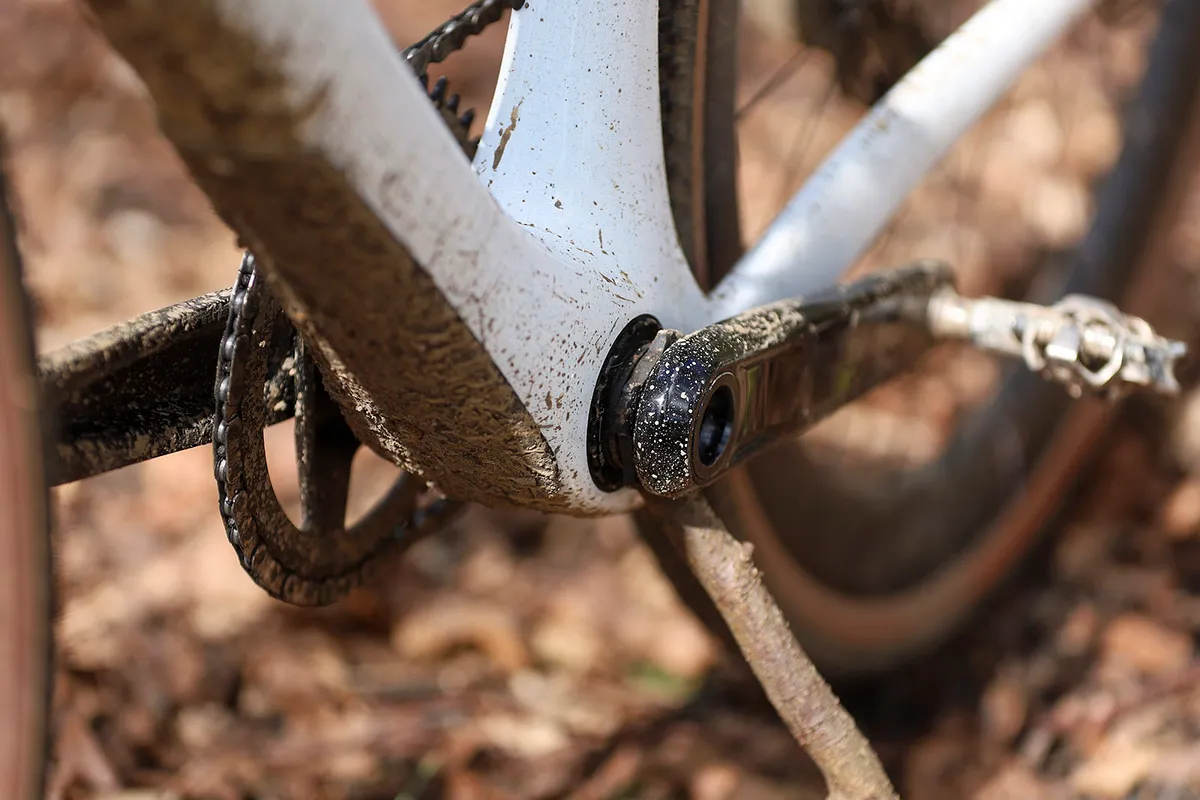
Between this and the reduced diameter of the down tube, the new Áspero cuts a much sleeker frontal area than the previous bike, although oddly Cervélo doesn’t make any specific aero claims around the new version.
It still has the same stripped-down design as the original bike – don’t expect fixtures and fittings for bikepacking here. As Cervélo exclaimed about the first Áspero, this is "a bike to haul ass, not luggage".
This means you only get triple bottle bosses – two inside the triangle and one below the down tube.
The inner down tube bosses also have two positions, to align both bottles for better aero performance.
Cervélo Áspero Rival XPLR AXS geometry
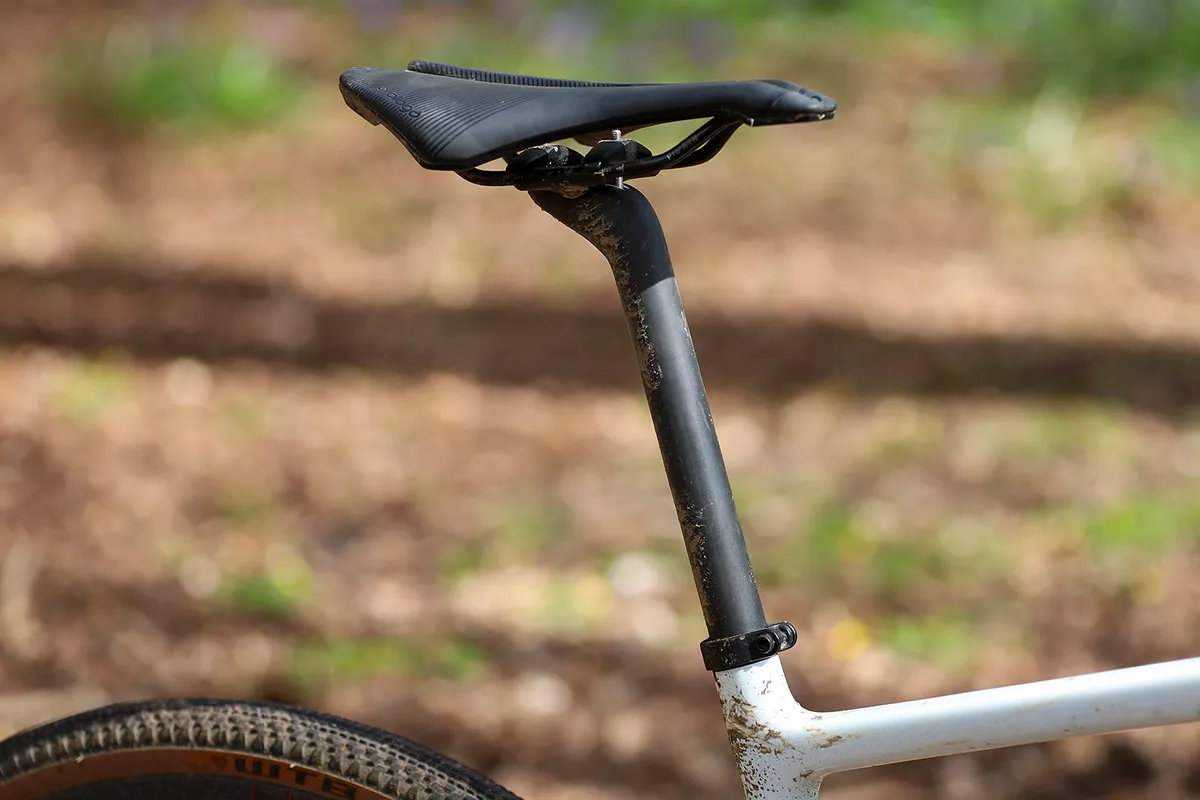
The Áspero's geometry remains largely unchanged from the first generation, save for slightly longer chainstays and a lower standover height.
That means you get a bike with a race-oriented ride position. My 56cm test bike has a relatively slammed 580mm stack height and lengthy 397mm reach.
The 73-degree seat tube angle is classic road bike stuff and puts you square over the crankset for maximum pedalling efficiency, with the inline carbon post and short-nose Prologo saddle.
At the front, the 72-degree head angle is only a degree shy of what you’d expect of Cervélo’s WorldTour-spec road racing bikes and consistent with classic endurance bike geometry.
The fork offset, of 46mm or 51mm, relates to a 62mm trail figure with the Trail Mixer dropout in the longer 51mm setting, or 67mm in the short.
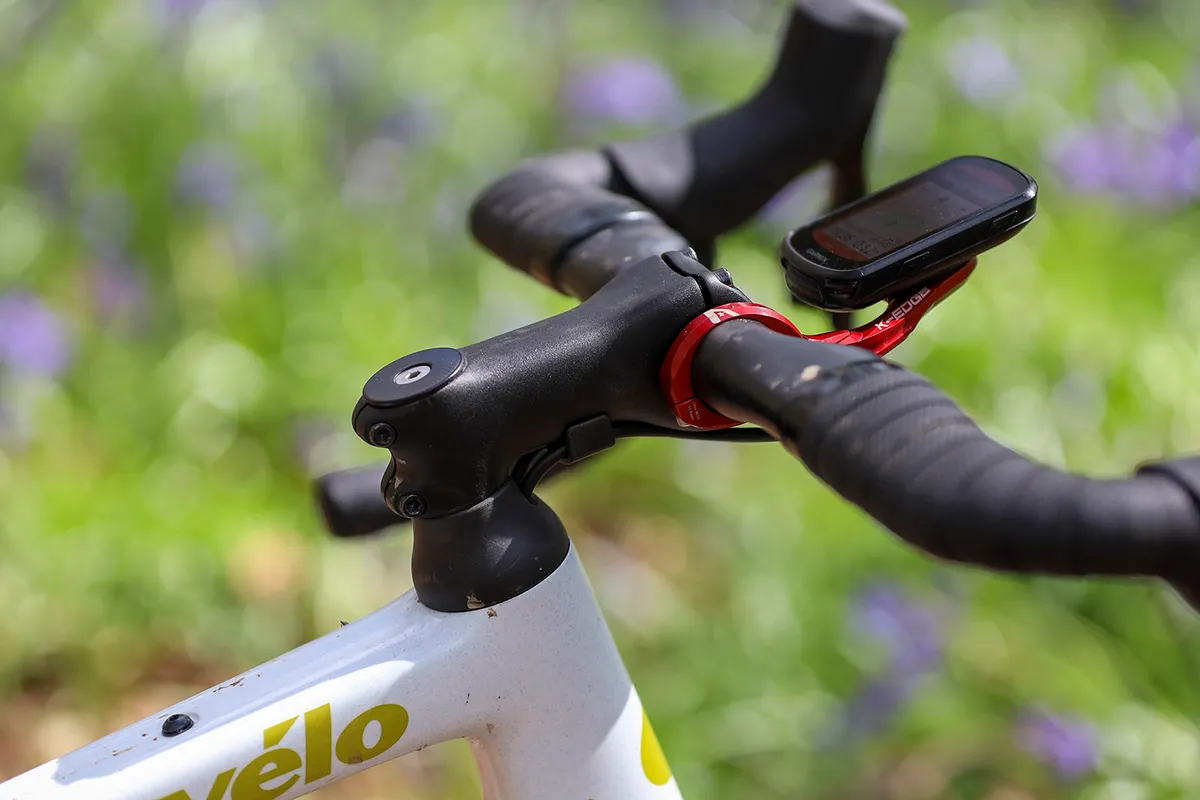
Drop down to a road-going 30c tyre and you're looking at 64mm of trail in the short setting, or a rapid 58mm in the longer.
In comparison, a sporty road endurance bike such as the Giant Defy has a 58.6mm trail in an equivalent size with 32c tyres. The ENVE Mog – an unabashed racey gravel bike – has 62mm of trail with a 40c tyre, in a 56cm size.
It's easy to see, then, that the Áspero has the potential to be both a rapid rough-stuffer and a tarmac terror.
| | 48 | 51 | 54 | 56 | 58 | 61 |
|---|---|---|---|---|---|---|
| Seat tube angle (degrees) | 74.5 | 74 | 73.5 | 73 | 73 | 73 |
| Head tube angle (degrees) | 71 | 71.5 | 72 | 72 | 72 | 72 |
| Chainstay (mm) | 420 | 420 | 420 | 420 | 420 | 420 |
| Top tube (mm) | 512 | 532 | 553 | 575 | 591 | 608 |
| Head tube (mm) | 83 | 107 | 133 | 159 | 188 | 214 |
| Fork offset (mm) | 53 | 49 | 46 | 46 | 46 | 46 |
| Trail (mm) | 58.6 | 58.6 | 58.6 | 58.6 | 58.6 | 58.6 |
| Bottom bracket drop (mm) | 78.5 | 78.5 | 76 | 76 | 73.5 | 73.5 |
| Wheelbase (mm) | 990 | 1000 | 1010 | 1027 | 1046 | 1063 |
| Standover (mm) | 690 | 732 | 764 | 788 | 814 | 838 |
| Stack (mm) | 505 | 530 | 555 | 580 | 605 | 630 |
| Reach (mm) | 370 | 379 | 388 | 397 | 406 | 415 |
Cervélo Áspero Rival XPLR AXS build

We’ve had the top-tier launch bike on test, and surprisingly for Cervélo, it means a third-tier groupset combined with some high-end finishing kit.
At face value, £5,200 for a SRAM Rival AXS XPLR-equipped bike sounds rather pricey. Look deeper into the specification, though, and you’ll find a quality carbon cockpit, a carbon seatpost, a great saddle and an impressive set of Reserve carbon wheels.
In comparison, Specialized’s lightweight gravel offering, the Crux, specced with the same Rival AXS groupset and Roval’s base-model carbon Terra C wheels, costs £5,500.
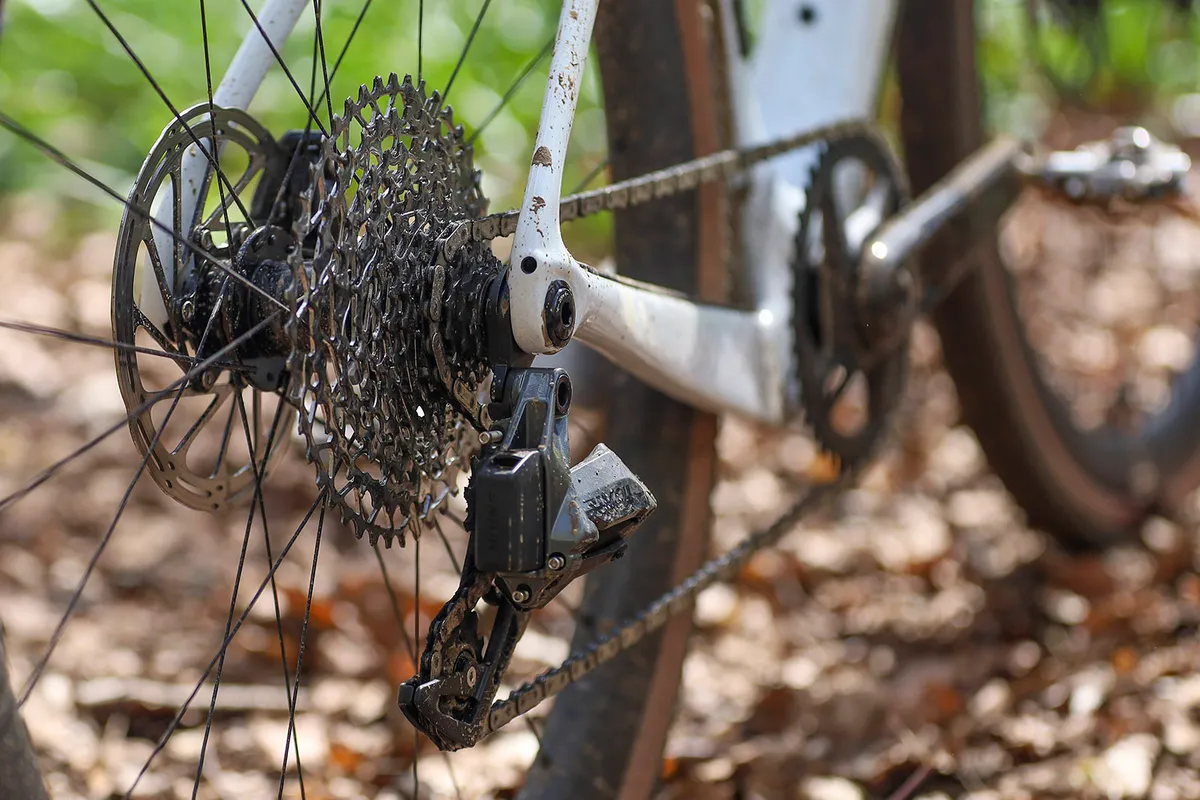
Likewise, Trek’s Checkpoint SLR 6 AXS, which has a Rival AXS groupset and Bontrager’s second-tier Aeolus Pro 3v wheels, costs £7,400.
The Áspero’s Reserve 40/44 combo isn’t the brand’s usual gravel fare – that's the 35s found on bikes such as Santa Cruz’s latest Stigmata.
The 40/44s are a WorldTour-proven aero combo, with a 40mm-deep front rim and a 44mm-deep rear, paired with a broad 25mm internal rim width.
However here, rather than the usual DT Swiss hub pairing we’ve seen from Reserve, the wheels are built with Zipp’s impressive ZR1 hubset.
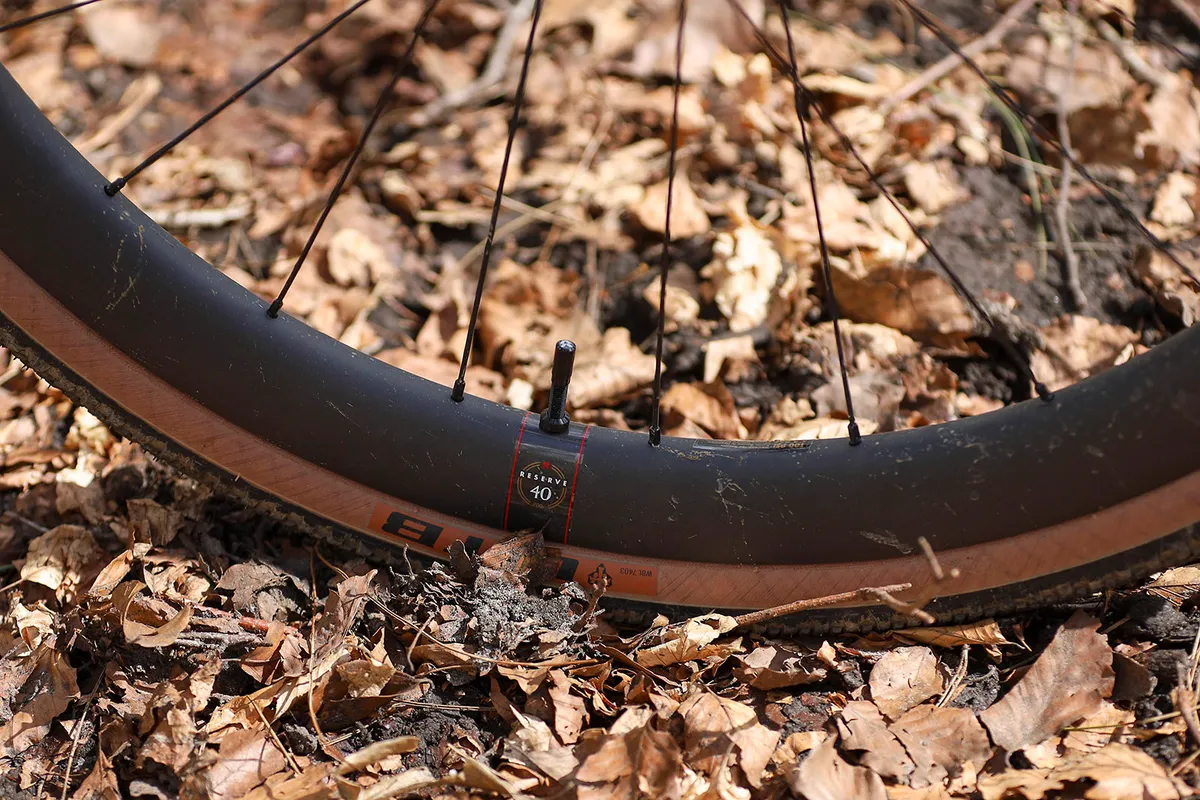
The Zipp wheels' 66-point engagement means a rapid engagement angle of only 5 degrees, while the low hub weight of 234g for the set contributes to a claimed wheelset weight of less than 1,450g.
In all, my size-56cm test bike weighed 8.53kg.
For context, Specialized’s similarly specced Crux Expert comes in a little lighter, at 8.53kg in a size 58cm, although Trek’s Checkpoint SLR 6 AXS is heavier at a claimed weight of 8.9kg in a size 56cm.
Cervélo Áspero Rival XPLR AXS ride impressions
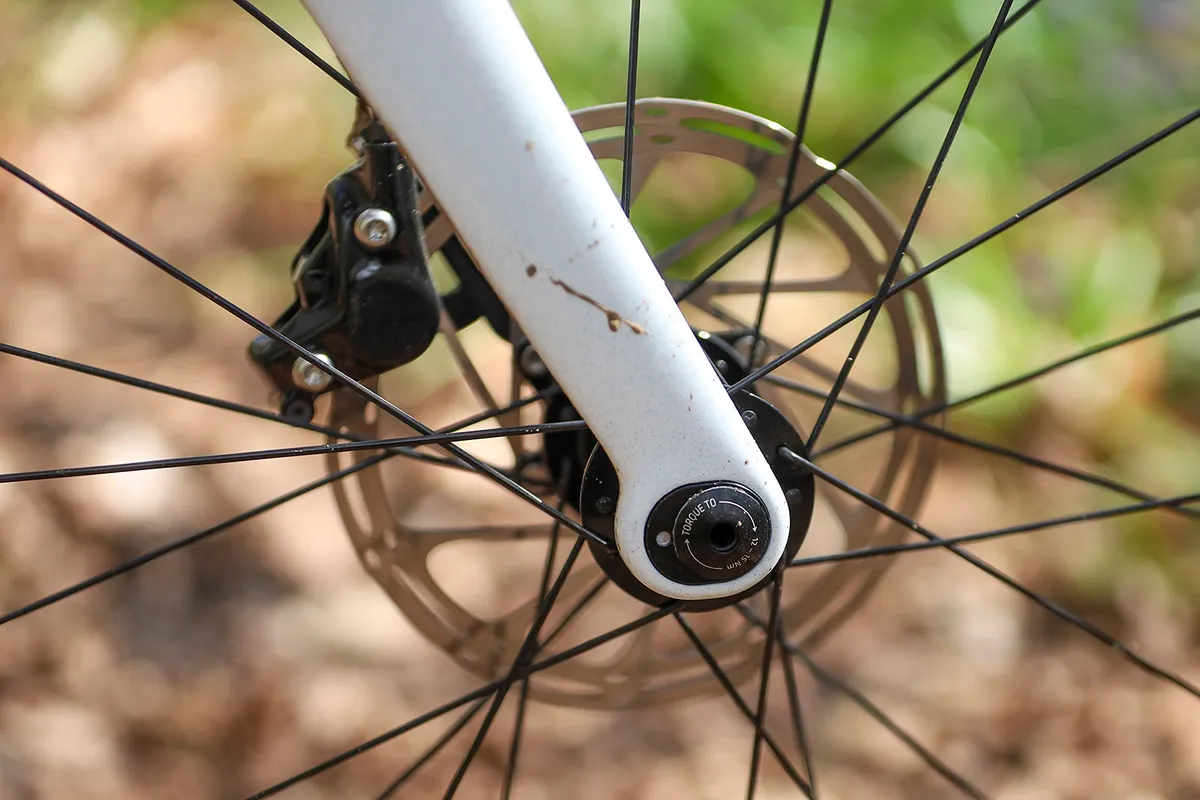
When it first launched back in 2019, I loved the original Áspero’s ride, with its road-bike geometry and ride quality. You could be forgiven for thinking gravel bike design had moved on in the intervening years, however.
Progressive geometry like that found on Merida’s Silex, GT’s Grade, and taken to the extreme on bikes such as Nukeproof’s Digger RS, had me thinking perhaps the new Áspero would ride like a bike from a bygone age.
Thankfully, I’ve been proved wrong. The Áspero still feels like a fast road bike, and you're positioned on it as you would be on a race bike or very sporty endurance bike.
It's nevertheless impressively capable on gravel, even moving onto more technical terrain. Of course, I’m not suggesting throwing it down a steep switchbacking singletrack, but get into tougher terrain and it takes a lot to unsettle this Cervélo.
When riding road sections between trailheads, this is one seriously capable bike. With the 40-tooth chainring and 10-44t cassette, I never found it wanting at road speed. The 40c WTB Vulpine tyres, with their close checkerboard-style tread, didn’t feel sluggish either.
It's off-road that the Áspero really shines, and the frame and fork are remarkably good.
You get the taut feeling of the Soloist when putting down the power. However, the combination of the quality tyres, superb contact points, and a frame and fork that absorb more chatter than they transmit, adds up to a bike that’s very capable on unmetalled roads.
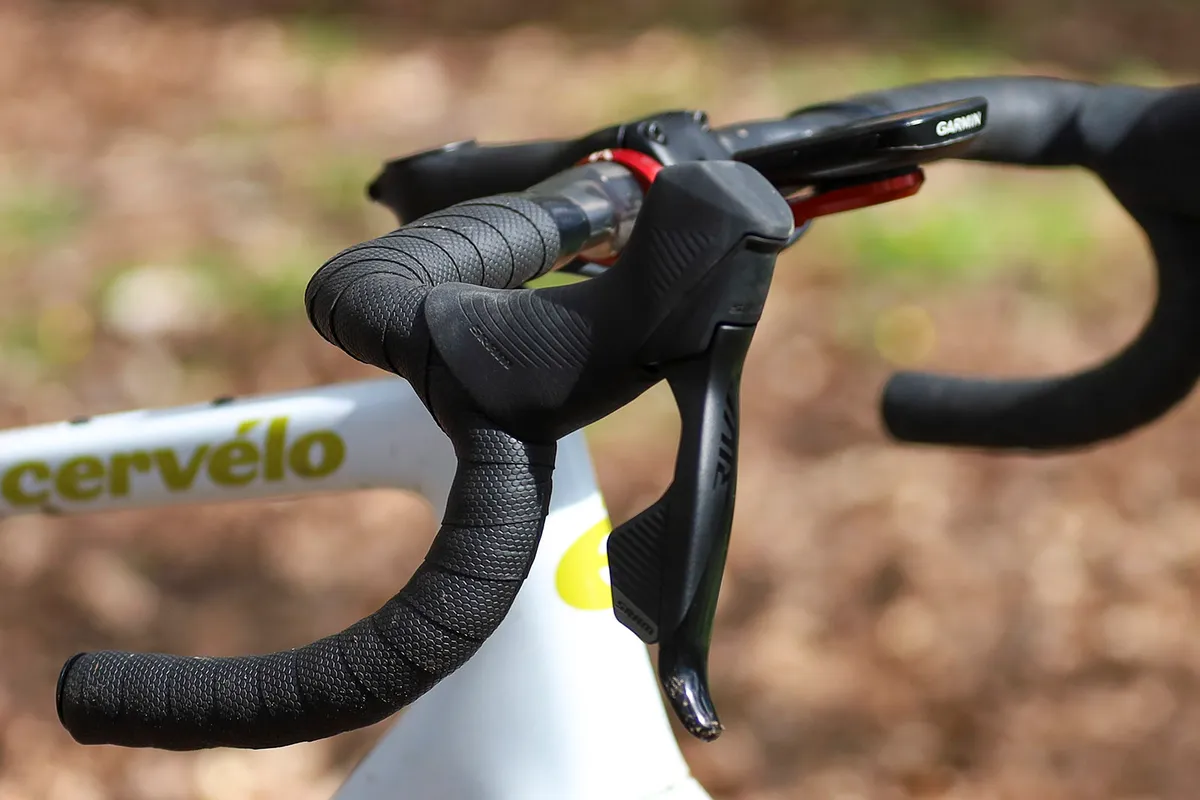
Like its predecessor, the new Áspero wants to leave the ground and hit a water bar, root or bump – and it loves to get airborne.
But where the previous bike would slap and slam into obstacles before bouncing upwards, this new Áspero takes the sting out of impacts, and landing is smoother too.
This all makes the Áspero a joy to push your limits on.
If you take the Áspero into more technically testing terrain, you may start to feel a little more exposed, though. The slammed ride position becomes noticeable, and even though it has a shorter stem (90mm on the 56cm), the steering doesn’t feel quite as nimble as bikes with more progressive geometry.
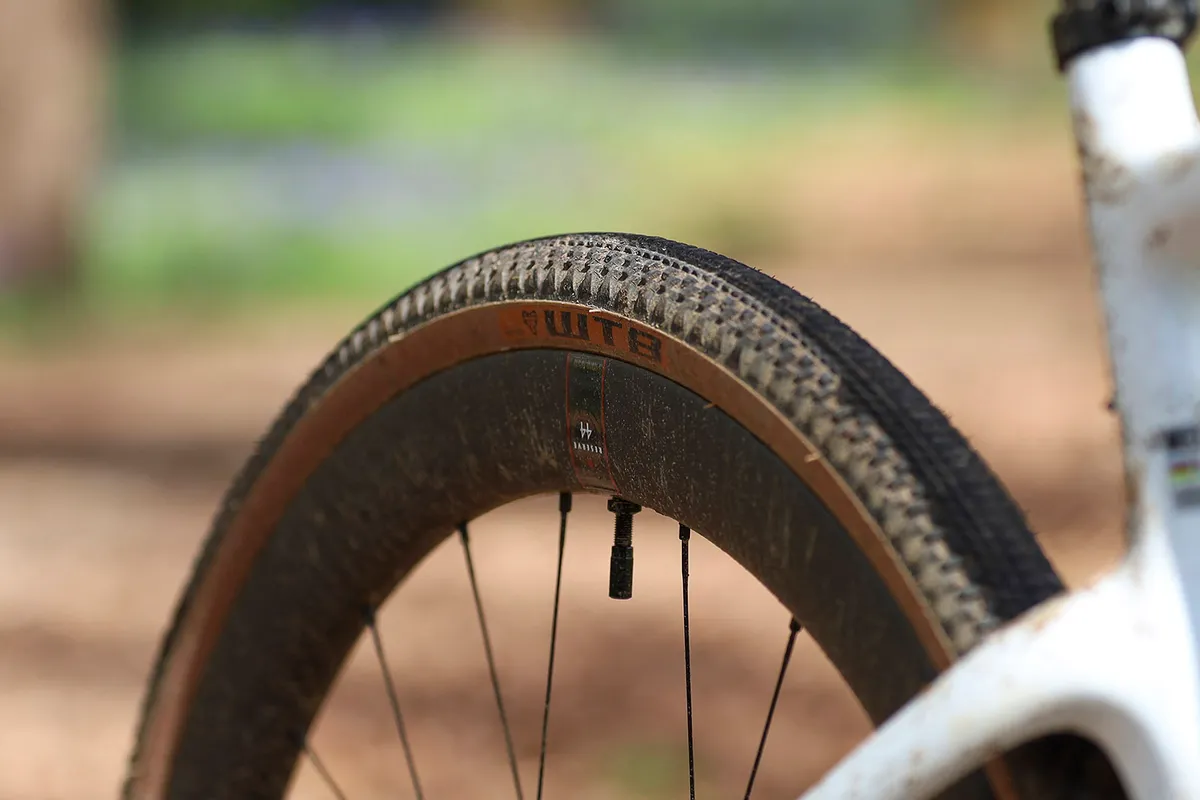
This is an expected trade-off, given its design focuses on speed on the road and less technical off-road terrain, however.
The one feather in its cap is the super-fast pickup of the Zipp ZR1 hubset.
This means slow-speed manoeuvres and injections of power to get up a steep, slippery ramp feel instantaneous, with no moment of inertia to put you off your game.
Cervélo Áspero Rival XPLR AXS bottom line
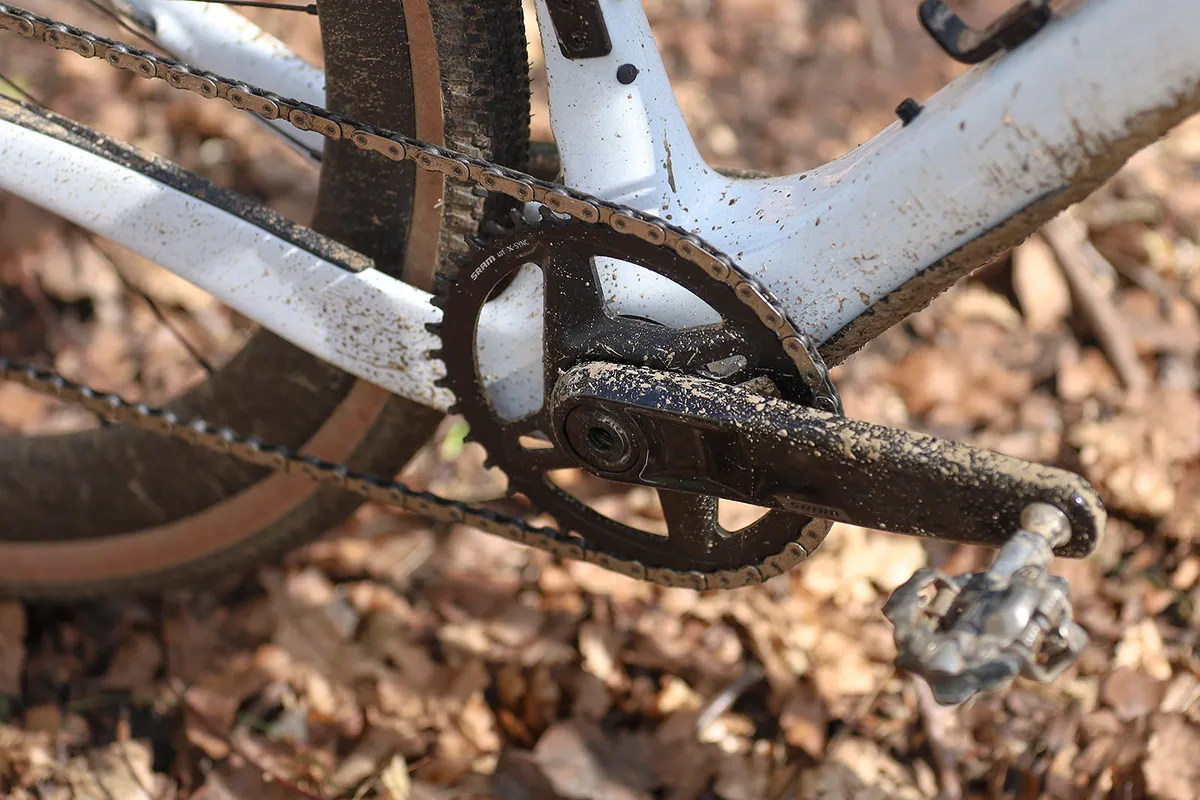
The Áspero flies in the face of current gravel-design thinking, not taking any inspiration from modern mountain bikes (perhaps surprisingly with Cervélo having moved into making mountain bikes fairly recently).
It's all the better for it, though – on the road, it's truly impressive: quick, nimble and a fun-filled ride.
Off-road, it's beautifully balanced between outlandish speed on less extreme gravel roads and not getting upset when the going gets sketchy.
Many brands have tried to create the all-round, all-roader and while most of those today are coming from the endurance road bike sphere, perhaps we’ve all been looking in the wrong place.
If you only have space for one bike in your life, this new heavier and softer Áspero may just be where you should fix your gaze.
Product
| Brand | Cervelo |
| Price | A$8000.00, €5799.00, £5200.00, $5500.00 |
| Weight | 8.53kg |
Features
| Fork | Cervélo All-Carbon, Tapered Áspero Fork |
| Stem | Cervélo ST36 Alloy, w Cable Management |
| Chain | SRAM Rival, 12 speed |
| Frame | Áspero |
| Tyres | WTB Vulpine TCS Light Fast Rolling Dual DNA 60tpi 700x40c |
| Brakes | SRAM Rival with SRAM Centerline Centerlock rotors |
| Cranks | SRAM Rival, 40T, DUB Wide |
| Saddle | Prologo Dimension STN |
| Headset | FSA IS2 |
| Shifter | SRAM Rival AXS, 12 speed |
| Cassette | SRAM Rival XPLR, 10-44, 12 Speed |
| Seatpost | Cervélo SP19 Carbon 27.2 |
| Handlebar | Cervélo AB09 Carbon, 31.8mm clamp, 16 degree flare |
| Bottom bracket | SRAM DUB Wide, T47 BBright |
| Available sizes | 48, 51, 54, 56, 58, 61cm |
| Rear derailleur | SRAM Rival XPLR AXS, 12 speed |
| Features | Accessories: Smartpak 400A Top Tube Storage Bag |
